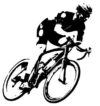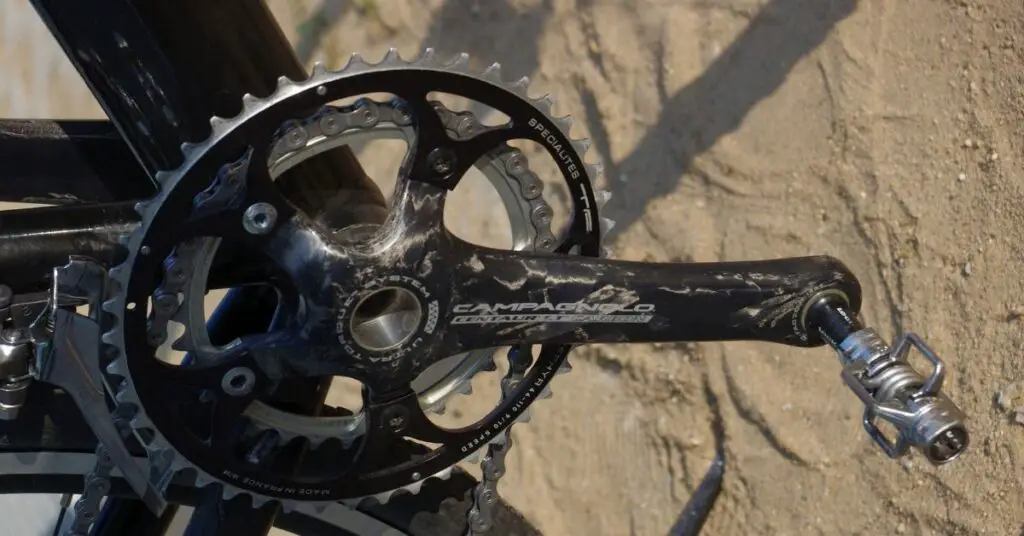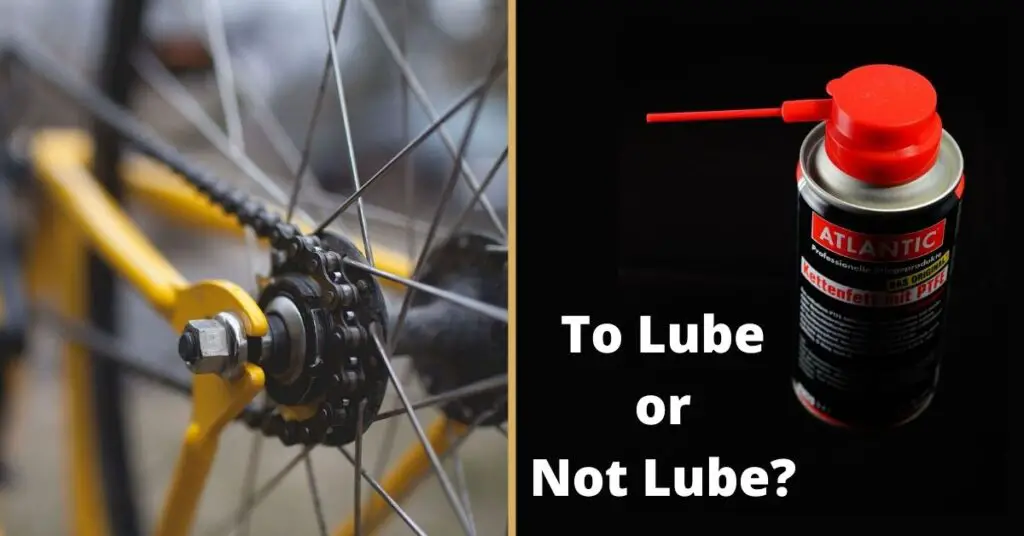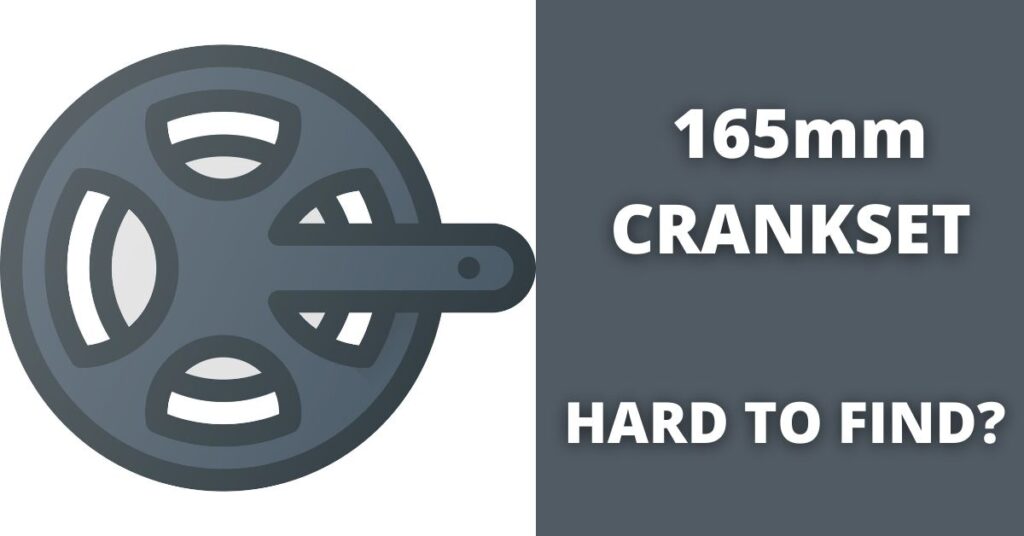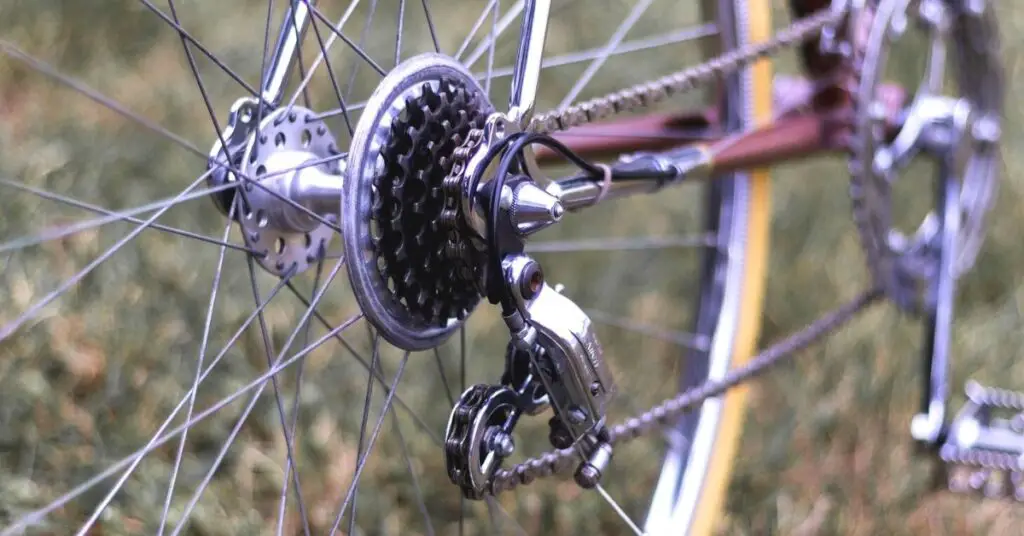Let’s understand a few key terms used in the cycling world while talking about drivetrains!
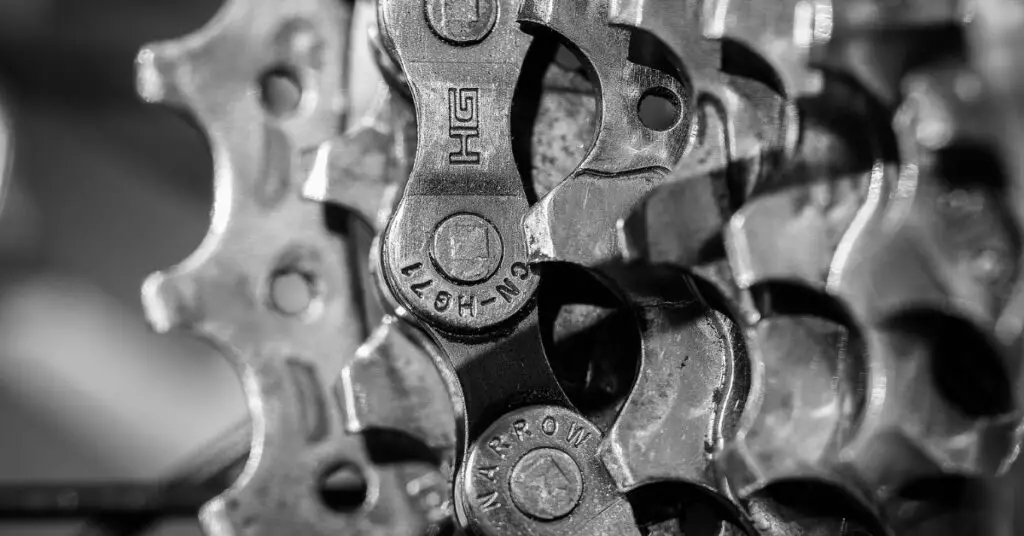
Bike Chain
The front cranks and chainrings of a bike are linked to the rear cassette through a roller chain (made up of carbon or alloy steel) that transfers the pedaling force applied by the cyclist to the rear wheel. The more the rider pedals, the more the chain moves and vice versa.
Bottom Bracket
The Bike’s frame is connected to the crankset or chainset through a bottom bracket. Although it is connected to the frame (which is stationary), the bottom bracket is able to rotate on its own, which in turn rotates other drivetrain components that propel the bike forward.
Can be threaded or pressed into a shell that houses a spindle and in which the bearings fit.
Cassette
A bike cassette is a set of many sprockets attached to the rear wheel hub through a threaded lockring. It is also referred to as a Cogset or Cluster. These sprockets or cogs are put together in ascending size.
Cassettes can look almost similar to Freewheels but have different mechanisms.
Usually, Cassettes have 5 to 13 sprockets. The purpose of cassettes (in collaboration with the derailleur) is to give multiple gearing options to the rider.
Sprockets with more teeth are called larger sprockets and running the chain on these gives ease in pedaling and is thus called “easier Gear”. A rider would, however, need to pedal more on the easier gear to cover the same distance if they were on smaller sprockets. The largest sprocket is close to the wheel.
The ones with smaller teeth are called smaller sprockets.
The sprockets are numbered as follows:
Largest sprocket = Lowest Gear
Smallest sprocket = Highest Gear
There are 2 types of cassettes:
1- Road Bike Cassettes
A Road bike is not required to make high jumps in gears like a mountain bike. The common small tooth cogs (sprockets) are 11,12 and 13 while the larger ones are 21 and 32.
2- Mountain Bike Cassettes
Mountain bikes need tougher gears due to the inclines, declines, and offroad conditions that they are meant to tackle. Therefore, these bikes need more sprockets (cogs). The larger sprockets will make hill climbing easier.
Crankset
To move the rear wheel of the bike, you need some force. This force is obtained from the rotating motion of the cyclist’s legs. When a cyclist applied this force to pedaling, it moves the arms (known as crankarms) to which the pedals are attached.
The crankarms are attached to the chainrings (one or more sprockets) which have teeth on the outside. The belt-like chain hooks onto these teeth, which in turn moves the rear wheel.
The Crankset is a part of the bicycle drivetrain. The general Crank arm length is 170 mm but can vary between 165mm and 180mm.
Derailleur
Derailleurs move the chain of the bike from one sprocket to another. They “Derail” the chain, that’s where they get their name from.
Freewheel
A freewheel is very similar to a cassette but has a different mechanism. A Freewheel enables the bike to cruise freely when the cyclist does not pedal. It is attached directly to the bike’s rear wheel. There can be multiple sprockets (cogs) or a single one in a freewheel. Sometimes, it might be referred as a block.
Gear Ratio
When the chain is moved to another sprocket or chainring, it is said to change the gear ratio. What this means is that when you rotate the crank by pushing the pedals for a full 360-degree cycle, the rear wheel will rotate a certain number of times, depending upon the gear ratio. The number of times the rear wheel rotates for each rotation of the crank arm is known as the gear ratio.
Scenario 1
Both the chainring and the sprocket have an equal number of teeth –> The Gear Ratio is 1:1
This means that the rear wheel will rotate only once with each full rotation of the cranks.
Scenario 2
The teeth on the Chainring are MORE than the number of teeth on the rear sprocket. Let’s say, chainring has 20 teeth and the rear sprocket has 10 –>The Gear Ratio is 2:1
This means that the rear wheel will rotate 2 TIMES with each full rotation of the cranks.
Scenario 3
The teeth on the Chainring are LESS than the number of teeth on the rear sprocket. Let’s say, chainring has 10 teeth and the rear sprocket has 30 –>The Gear Ratio is 1:3
This means that the rear wheel will rotate only once with 3 FULL ROTATIONS of the cranks.
Hope that explained the gearing system well.
Pedals
To move a bicycle forward, the cyclist has to apply force with their feet. The rider directly applies this force to a part of the crankset known as pedals.
The pedals come in direct contact with the rider’s feet (shoes). The pedals transfer the force to the crankarms, which transfer it to cranks, which transfer it to the chain, which in turn transfer it to the rear wheel, thus moving the bike forward.
There are a few kinds of pedals in the market today:
1- Platform Pedals
2- Toe Clips
3- Hybrid Pedals
4- Clipless Pedals
Shifter
Selecting a gear means selecting the amount of strength and effort that a cyclist wants to apply to the pedals.
That component of a bike’s drivetrain system that decides the gear of the bike is called a shifter. Because it controls the derailleur movement through a cable, it can shift gears. It is also known as a Gear lever.
The shifters can be found on bike handlebars on both left and right-hand sides. The left shifter usually is for the front chainrings while the right shifter is for the rear gears.
Shifters can be:
1- Thumb Shifters
2- Grip shifters
3- Dropbar Integrated Combo Shifters
Conclusion
These are the most frequent terms (parts) used to refer to various components and concepts while referring to a bike’s drivetrain mechanism.
Cheers!
